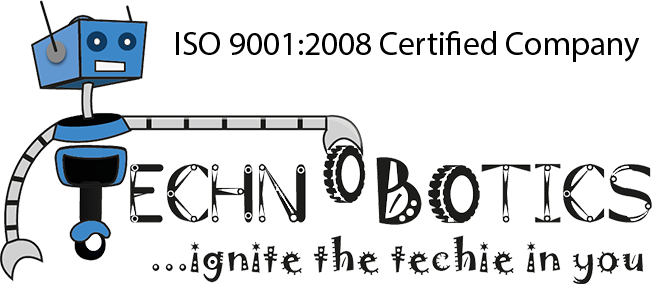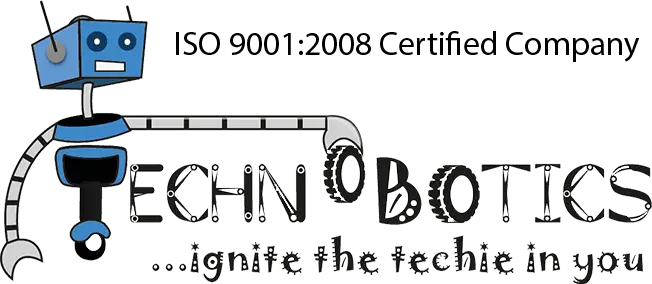The Role of Robotics in STEM Education:
Robotics is a vital component of STEM program (Science, Technology, Engineering, and Mathematics) education. It combines several disciplines into a cohesive learning experience, fostering critical thinking, creativity, and problem-solving skills. Let’s delve into why robotics programming is essential in STEM and explore the opportunities it offers through programming courses for beginners, machine learning courses, and specialized robotics programming courses.
The Importance of Robotics in STEM
Robotics programming courses are not just about writing code. It integrates various fields, such as mechanics, electronics, and computer science. This multidisciplinary approach helps students understand how different STEM areas interact and depend on each other. For instance, creating a robot involves designing mechanical parts, wiring electronic components, and programming software to control the robot’s movements. This hands-on experience from programming courses for beginners is invaluable for students as it prepares them for real-world applications.
Developing Problem-Solving Skills
One of the core benefits of robotics programming is its emphasis on problem-solving. Students are often tasked with designing robots to perform specific tasks, which requires them to think critically and creatively. They must troubleshoot issues, optimize their designs, and find innovative solutions. This process of programming courses for beginners nurtures a mindset that is crucial not only in STEM fields but also in everyday life.
Enhancing Creativity
Robotics programming in a STEM program encourages creativity by allowing students to design and build their robots. Unlike traditional rote learning methods, robotics projects are open-ended and can be tailored to the student’s interests and imagination. This freedom to create fosters a love for learning and exploration, which is essential for scientific and technological advancement.
Preparing for the Future Job Market
As technology continues to evolve, the demand for skilled professionals in robotics and automation is increasing. By learning robotics programming, students gain skills that are highly sought after in the job market. From manufacturing to healthcare, robots are becoming integral to various industries. Early exposure to robotics programming can give students a significant advantage in their future careers.
Robotics Programming Courses for Beginners
For those new to robotics, starting with programming courses for beginners is a great way to build a strong foundation. These courses typically cover the basics of coding and introduce students to the principles of robotics.
Understanding Basic Programming Concepts
Beginner programming courses often start with languages like Python or Scratch, which are user-friendly and widely used in educational settings. These courses teach fundamental programming concepts such as loops, conditionals, and functions. Understanding these basics is crucial before moving on to more complex robotics programming.
Hands-On Experience with Simple Robots
Many beginner stem program include hands-on projects where students can build and program simple robots. Kits like LEGO Mindstorms or VEX Robotics are popular choices. These kits come with easy-to-follow instructions and pre-designed models, allowing students to focus on learning the programming aspects without getting overwhelmed by hardware complexities.
Building Confidence
Starting with simple projects helps build confidence. As students see their code come to life through the movements of their robots, they gain a sense of accomplishment. This positive reinforcement encourages them to take on more challenging projects and continue learning.
The Role of Machine Learning in Robotics
Machine learning courses become more and more pertinent as students advance in their robotics studies. Teaching robots to learn from data and get better over time is called machine learning, which is a branch of artificial intelligence.
Enhancing Robotic Capabilities
By incorporating machine learning into robotics programming, students can create robots that can adapt and improve. For example, a robot with machine learning capabilities can learn to navigate a maze more efficiently by analyzing its previous attempts. This ability to learn and adapt makes robots more autonomous and effective.
Understanding Data Science
Machine learning courses introduce students to data science concepts, such as data collection, analysis, and interpretation.
These skills are crucial in today’s data-driven world. In the context of robotics, understanding how to work with data allows students to create smarter and more responsive robots.
Preparing for Advanced Technologies
The cutting edge of technical advancement is machine learning. By learning machine learning, students position themselves to work on cutting-edge technologies such as autonomous vehicles, intelligent assistants, and advanced robotics. These technologies are shaping the future, and having a background in machine learning opens up numerous career opportunities.
Specialized Robotics Programming Courses
For those looking to delve deeper, specialized robotics programming courses offer a comprehensive education in robotics. These courses often cover advanced topics and provide in-depth knowledge and skills.
Advanced Programming Languages and Tools
Specialized courses in stem programs go beyond basic programming languages and introduce students to advanced tools and languages used in professional robotics. These might include ROS (Robot Operating System), C++, and MATLAB. Learning these tools equips students with the skills needed to tackle complex robotics projects.
Project-Based Learning
Many specialized courses in stem programs adopt a project-based learning approach. Students work on real-world projects, such as designing and programming autonomous drones or robotic arms. This hands-on experience is invaluable, as it closely mirrors the challenges and workflows of professional robotics engineering.
Collaboration and Teamwork
Robotics projects in a STEM program often require collaboration. Specialized courses emphasize teamwork, as students work together to solve problems and complete projects. This collaborative experience is essential, as it mirrors the interdisciplinary nature of modern engineering and technology projects.
Final Words
Robotics programming in a STEM program is a crucial component of STEM education. It offers a unique blend of multiple disciplines, fosters critical problem-solving skills, and enhances creativity. Through programming courses for beginners, with Technobotics, students build a strong foundation, while machine learning courses and specialized robotics programming courses provide advanced knowledge and skills. The significance of robotics programming in STEM fields will only increase as technology develops further, equipping students for the workforce of the future and fostering technological creativity.


